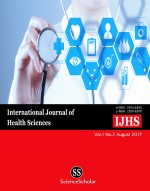Comparison of postoperative pain during caesarean section under general anesthesia and spinal anesthesia
Keywords:
caesarean section, general anesthesia, spinal anesthesiaAbstract
This study presents a number of ideas and comparisons regarding whether there is a difference between the degree of postoperative pain in cesarean sections with epidural anesthesia compared to spinal anesthesia, focusing on comparing intraoperative desflurane in general anesthesia. In the comparison, the primary outcome regarding postoperative pain levels over 24 hours showed that there is no significant difference in postoperative pain between groups. Regarding postoperative secondary outcomes, the recovery time and remifentanil cumulative dose were different intraoperatively between groups. From this study's results, we can conclude that there is no significant difference in postoperative pain during cesarean sections in general anesthesia and spinal anesthesia. The increase in intraoperative opioids and depth of anesthesia in both groups reduces the incidence of VRS 1-24 hour postoperative pain equally. However, a longer time for the first analgesic request was obtained with the caudal technique compared to general anesthesia. These results could discourage the routine use of general anesthesia for analgesic purposes in comparison to other anesthetic approaches in cesarean sections. However, further randomized controlled studies should be conducted across health institutions or populations to confirm and extend these findings.
Downloads
References
Ashokka, B., Loh, M. H., Tan, C. H., Su, L. L., Young, B. E., Lye, D. C., ... & Choolani, M. (2017). Care of the pregnant woman with coronavirus disease 2019 in labor and delivery: anesthesia, emergency cesarean delivery, differential diagnosis in the acutely ill parturient, care of the newborn, and protection of the healthcare personnel. American journal of obstetrics and gynecology, 223(1), 66-74. nih.gov DOI: https://doi.org/10.1016/j.ajog.2020.04.005
Aydin, M. E., Bedir, Z., Yayik, A. M., Celik, E. C., Ates, I., Ahiskalioglu, E. O., & Ahiskalioglu, A. (2017). Subarachnoid block and ultrasound-guided transversalis fascia plane block for caesarean section: a randomised, double-blind, placebo-controlled trial. European Journal of Anaesthesiology| EJA, 37(9), 765-772. [HTML] DOI: https://doi.org/10.1097/EJA.0000000000001222
Coppes, O. J. M., Yong, R. J., Kaye, A. D., & Urman, R. D. (2017). Patient and surgery-related predictors of acute postoperative pain. Current pain and headache reports, 24, 1-8. [HTML] DOI: https://doi.org/10.1007/s11916-020-0844-3
Gobbo, M., Saldaña, R., Rodríguez, M., Jiménez, J., García-Vega, M. I., de Pedro, J. M., & Cea-Calvo, L. (2017). Patients’ experience and needs during perioperative care: a focus group study. Patient preference and adherence, 891-902. tandfonline.com DOI: https://doi.org/10.2147/PPA.S252670
Kollltveit, J., Osaland, M., Reimers, M., & Berle, M. (2017). A comparison of pain registration by Visual Analog Scale and Numeric Rating Scale–a cross-sectional study of primary triage registration. Medrxiv. medrxiv.org
Köse Tamer, L. & Sucu Dağ, G. (2017). The assessment of pain and the quality of postoperative pain management in surgical patients. Sage Open. sagepub.com
Morris, S. & Jones, R. (2017). Anaesthesia for caesarean section: general anaesthesia. Obstetric Anaesthesia. [HTML]
Nair, A. S. & Diwan, S. (2017). Pain scores and statistical analysis—the conundrum. Ain-Shams Journal of Anesthesiology. springer.com
Situ, S., Gupta, P., Thirunavukkarasu, M., & Chaudhary, G. (2017). Unilateral complete ptosis after scalp block: A rare complication of common procedure. Indian Journal of Anaesthesia, 64(12), 1077-1078. lww.com DOI: https://doi.org/10.4103/ija.IJA_675_20
Published
How to Cite
Issue
Section
Copyright (c) 2017 International journal of health sciences

This work is licensed under a Creative Commons Attribution-NonCommercial-NoDerivatives 4.0 International License.
Articles published in the International Journal of Health Sciences (IJHS) are available under Creative Commons Attribution Non-Commercial No Derivatives Licence (CC BY-NC-ND 4.0). Authors retain copyright in their work and grant IJHS right of first publication under CC BY-NC-ND 4.0. Users have the right to read, download, copy, distribute, print, search, or link to the full texts of articles in this journal, and to use them for any other lawful purpose.
Articles published in IJHS can be copied, communicated and shared in their published form for non-commercial purposes provided full attribution is given to the author and the journal. Authors are able to enter into separate, additional contractual arrangements for the non-exclusive distribution of the journal's published version of the work (e.g., post it to an institutional repository or publish it in a book), with an acknowledgment of its initial publication in this journal.
This copyright notice applies to articles published in IJHS volumes 4 onwards. Please read about the copyright notices for previous volumes under Journal History.
















